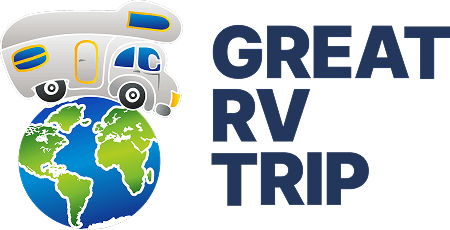Motorhome travel
Motorhome travel
The discount is valid for bookings over 10 days
Motorhome rental
Leave your contacts so we can contact you
Norway, the land of majestic fjords, mountains, and the northern lights, offers perfect conditions for exploring by motorhome. From scenic coastal roads to the rugged beauty of the northern islands, this way of traveling allows you to create your own route and experience Norway at your own pace. A motorhome trip is the best way to reach remote places and enjoy breathtaking views right from your window.
We operate as an RV rental aggregator, partnering with the most reliable rental companies in Norway. We’ll help you find the best options with great prices and conditions.
We operate as an RV rental aggregator, partnering with the most reliable rental companies in Norway. We’ll help you find the best options with great prices and conditions.
Quick overview of the country
Before planning a motorhome trip in Norway, it’s helpful to know some basic information.
Capital: Oslo. Driving is on the right side of the road.
Languages: The official language is Norwegian, which has two written forms — Bokmål and Nynorsk. The Sámi languages also have official status in some regions. English is widely spoken, especially among young people and in the service industry, so communication is usually not a problem.
Currency and payments: The national currency is the Norwegian krone (NOK). Euro is not an official currency and is rarely accepted. Credit and debit cards (Visa, Mastercard) are widely used — even for small payments. Cash is only needed in rare cases (some parking machines, private roads, or local markets in remote areas). ATMs (marked as “Minibank”) are easy to find. Currency exchange is possible at banks or exchange offices, but using cards is generally more convenient. Important: Cards issued by Russian banks (Mir, Visa, Mastercard) do not work in Norway.
Time zone: Central European Time — UTC+1 in winter and UTC+2 in summer (same as most of Central Europe).
Visas: Norway is part of the Schengen area but not a member of the EU. Travelers from countries outside the EU/Schengen need a valid Schengen visa to enter. Always check the current visa requirements on the official website of the Norwegian Directorate of Immigration (UDI) or the Norwegian embassy/consulate in your country.
Capital: Oslo. Driving is on the right side of the road.
Languages: The official language is Norwegian, which has two written forms — Bokmål and Nynorsk. The Sámi languages also have official status in some regions. English is widely spoken, especially among young people and in the service industry, so communication is usually not a problem.
Currency and payments: The national currency is the Norwegian krone (NOK). Euro is not an official currency and is rarely accepted. Credit and debit cards (Visa, Mastercard) are widely used — even for small payments. Cash is only needed in rare cases (some parking machines, private roads, or local markets in remote areas). ATMs (marked as “Minibank”) are easy to find. Currency exchange is possible at banks or exchange offices, but using cards is generally more convenient. Important: Cards issued by Russian banks (Mir, Visa, Mastercard) do not work in Norway.
Time zone: Central European Time — UTC+1 in winter and UTC+2 in summer (same as most of Central Europe).
Visas: Norway is part of the Schengen area but not a member of the EU. Travelers from countries outside the EU/Schengen need a valid Schengen visa to enter. Always check the current visa requirements on the official website of the Norwegian Directorate of Immigration (UDI) or the Norwegian embassy/consulate in your country.
Why Norway is perfect for a motorhome trip
A road trip through Norway is appealing for several reasons. The main one is the breathtaking nature: deep fjords cutting into the land, towering mountains with snow-capped peaks even in summer, mighty glaciers, and countless waterfalls, along with a rugged coastline. A motorhome lets you stay close to nature and wake up with views of fjords or mountains right outside your window.
Traveling in this format gives you flexibility in planning your route, which is especially valuable in a large and diverse country like Norway. You can easily change plans, stay longer in places you love, explore smaller roads that lead to hidden gems, and not depend on hotel bookings or public transport.
Norway has an excellent road network, with countless tunnels (including underwater) and bridges that make even remote islands and fjord crossings accessible. There are specially designed National Tourist Routes (Nasjonale turistveger) — 18 scenic routes passing through the most beautiful places, equipped with architecturally designed viewpoints, rest areas, and service stations. Campervan infrastructure (overnight spots, service stations) is well developed throughout the country.
Norway’s famous “Right to Roam” (Allemannsretten) allows free access to nature. While it does have some restrictions (explained in the overnight stays section), the very philosophy of being close to nature makes a motorhome one of the most natural and organic ways to explore this Scandinavian country.
Traveling in this format gives you flexibility in planning your route, which is especially valuable in a large and diverse country like Norway. You can easily change plans, stay longer in places you love, explore smaller roads that lead to hidden gems, and not depend on hotel bookings or public transport.
Norway has an excellent road network, with countless tunnels (including underwater) and bridges that make even remote islands and fjord crossings accessible. There are specially designed National Tourist Routes (Nasjonale turistveger) — 18 scenic routes passing through the most beautiful places, equipped with architecturally designed viewpoints, rest areas, and service stations. Campervan infrastructure (overnight spots, service stations) is well developed throughout the country.
Norway’s famous “Right to Roam” (Allemannsretten) allows free access to nature. While it does have some restrictions (explained in the overnight stays section), the very philosophy of being close to nature makes a motorhome one of the most natural and organic ways to explore this Scandinavian country.
Popular regions and routes for motorhome travel
Norway offers countless routes that are perfect for camper travel.
Here are some of the most popular:
Here are some of the most popular:
-
 Fjord Norway (Western Fjords)The most visited region and the heart of Norway’s fjords. This is where you’ll find the Geirangerfjord and Nærøyfjord(both UNESCO World Heritage Sites), the longest Sognefjord, and the stunning Lysefjord, famous for the Preikestolen (Pulpit Rock) and Kjeragbolten (the suspended boulder). Major cities in the region include Bergen, Stavanger, and Ålesund.
Fjord Norway (Western Fjords)The most visited region and the heart of Norway’s fjords. This is where you’ll find the Geirangerfjord and Nærøyfjord(both UNESCO World Heritage Sites), the longest Sognefjord, and the stunning Lysefjord, famous for the Preikestolen (Pulpit Rock) and Kjeragbolten (the suspended boulder). Major cities in the region include Bergen, Stavanger, and Ålesund.
Many of Norway’s National Tourist Routes pass through this area, including the breathtaking Geiranger–Trollstigen Road. Traveling in this region takes time due to winding roads and frequent ferry crossings over the fjords. -
 Lofoten IslandsAn archipelago above the Arctic Circle, famous for its dramatic scenery with sharp mountain peaks rising straight from the sea, traditional fishing villages (rorbuer) with iconic red cabins on stilts, and stunning white-sand beaches with turquoise waters. In winter, the islands are perfect for watching the Northern Lights, and in summer, you’ll experience the Midnight Sun. The E10 highway connects the main islands via bridges and tunnels. Campsites and legal overnight spots are in high demand during summer, so it’s important to plan your stays in advance.
Lofoten IslandsAn archipelago above the Arctic Circle, famous for its dramatic scenery with sharp mountain peaks rising straight from the sea, traditional fishing villages (rorbuer) with iconic red cabins on stilts, and stunning white-sand beaches with turquoise waters. In winter, the islands are perfect for watching the Northern Lights, and in summer, you’ll experience the Midnight Sun. The E10 highway connects the main islands via bridges and tunnels. Campsites and legal overnight spots are in high demand during summer, so it’s important to plan your stays in advance. -
 The Atlantic Road (Atlanterhavsvegen)A relatively short — just over 8 km — but world-famous stretch of a National Tourist Route in western Norway. It is renowned for its curved bridges that connect a chain of small islands and skerries, running right above the Atlantic Ocean.
The Atlantic Road (Atlanterhavsvegen)A relatively short — just over 8 km — but world-famous stretch of a National Tourist Route in western Norway. It is renowned for its curved bridges that connect a chain of small islands and skerries, running right above the Atlantic Ocean. -
 Trollstigen (The Troll Road)An impressive mountain serpentine with 11 steep hairpin turns, part of the Geiranger–Trollstigen National Tourist Route. The road is open only during the summer months — usually from late May/early June to October/November, depending on snowmelt and weather conditions. Driving a motorhome here requires extra caution and driving experience due to the steep and narrow mountain roads.
Trollstigen (The Troll Road)An impressive mountain serpentine with 11 steep hairpin turns, part of the Geiranger–Trollstigen National Tourist Route. The road is open only during the summer months — usually from late May/early June to October/November, depending on snowmelt and weather conditions. Driving a motorhome here requires extra caution and driving experience due to the steep and narrow mountain roads. -
 Southern Norway (Sørlandet)Often called the “Norwegian Riviera” for its charming coastal towns with white wooden houses, numerous islands and skerries, and a milder, sunnier summer climate compared to the rest of Norway. This region is a popular destination for relaxed family holidays.
Southern Norway (Sørlandet)Often called the “Norwegian Riviera” for its charming coastal towns with white wooden houses, numerous islands and skerries, and a milder, sunnier summer climate compared to the rest of Norway. This region is a popular destination for relaxed family holidays. -
 Central and Eastern NorwayThis part of the country offers a different kind of landscape: vast mountain plateaus and national parks — including Jotunheimen (home to Norway’s highest peaks), Rondane, and Hardangervidda — as well as large lakes and dense forests. The capital city, Oslo, is also located here. It’s an ideal region for hiking enthusiasts and those who want to experience Norway beyond the fjords.
Central and Eastern NorwayThis part of the country offers a different kind of landscape: vast mountain plateaus and national parks — including Jotunheimen (home to Norway’s highest peaks), Rondane, and Hardangervidda — as well as large lakes and dense forests. The capital city, Oslo, is also located here. It’s an ideal region for hiking enthusiasts and those who want to experience Norway beyond the fjords.
Map of Norway
Routes in Norway
Route : ~1519 km
Duration : 10 days
Duration : 10 days
Route: ~ 2000 km
Duration: 12 days
Duration: 12 days
Best time for a motorhome trip
The choice of season for a motorhome trip in Norway has a huge impact on route availability, weather conditions, and the overall experience.
Summer (mid-June – mid-August)
This is the most popular and, for most people, the most convenient season.
Main advantages: long daylight hours (above the Arctic Circle — the period of the Midnight Sun, when the sun doesn’t set at all), the warmest and most stable weather (although rain and chilly days are still possible, temperatures range from +15 to +25°C in the south, cooler in the north and mountains). All roads, including high mountain passes like Trollstigen, Stalheimskleiva, or Sognefjellet, are usually open. All campgrounds operate, ferries run on the summer schedule, and all tourist activities are available.
Disadvantages: the highest prices for rentals, campgrounds, and ferries; the largest number of tourists, especially in popular places (Lofoten, Geiranger), which requires early campground booking and being prepared for ferry queues.
Main advantages: long daylight hours (above the Arctic Circle — the period of the Midnight Sun, when the sun doesn’t set at all), the warmest and most stable weather (although rain and chilly days are still possible, temperatures range from +15 to +25°C in the south, cooler in the north and mountains). All roads, including high mountain passes like Trollstigen, Stalheimskleiva, or Sognefjellet, are usually open. All campgrounds operate, ferries run on the summer schedule, and all tourist activities are available.
Disadvantages: the highest prices for rentals, campgrounds, and ferries; the largest number of tourists, especially in popular places (Lofoten, Geiranger), which requires early campground booking and being prepared for ferry queues.
Spring (May – mid-June)
This is the time when nature awakens. Melting snow makes the waterfalls especially powerful and impressive. Fruit trees start blooming along the fjord slopes, particularly in Hardanger. There are significantly fewer tourists than in summer, and prices may be lower. However, the weather is very unpredictable: warm sunny days can quickly change to cold, rainy, or even snowy conditions in the mountains. Many high mountain roads open only by late May or early June — always check their current status. Some campgrounds and tourist attractions may not be fully operational yet.
Autumn (mid-August – September, sometimes early October)
Autumn paints the Norwegian landscapes in bright yellow and red tones, creating a beautiful atmosphere. The tourist flow decreases, and everything becomes calmer. Temperatures start to drop, especially at night, with possible first frosts and snow in the mountains. The weather becomes more rainy and windy. Some high mountain roads start closing as early as September or early October. Some campgrounds close for the season in September. This is a good time for those seeking solitude and autumn colors but requires readiness for changing weather conditions.
Winter (October – April)
A motorhome trip in winter is a very specific experience, usually done for Northern Lights hunting (best time: October to March) in northern Norway.
Main challenges: very short daylight hours (Polar Night above the Arctic Circle), low temperatures (can be extremely cold, especially inland), and difficult road conditions (snow, ice). Most mountain roads are closed. Many campgrounds are either closed or offer very limited services (often with no access to water).
You’ll need a motorhome that is fully winter-equipped (studded tires, efficient heating, insulation, heated water tanks) and solid experience with winter driving. Renting such RVs is limited and more expensive.
Main challenges: very short daylight hours (Polar Night above the Arctic Circle), low temperatures (can be extremely cold, especially inland), and difficult road conditions (snow, ice). Most mountain roads are closed. Many campgrounds are either closed or offer very limited services (often with no access to water).
You’ll need a motorhome that is fully winter-equipped (studded tires, efficient heating, insulation, heated water tanks) and solid experience with winter driving. Renting such RVs is limited and more expensive.
Regional climate differences
The climate along the coast (especially the west), moderated by the Gulf Stream, is milder and wetter, with smaller temperature fluctuations compared to inland areas. Eastern Norway has a more continental climate. The northern regions are characterized by a harsh subarctic and arctic climate. Mountain weather is always unpredictable and can change rapidly.
Renting a motorhome in Norway: what you need to know
Renting a motorhome in Norway is possible, but this market is different from other countries, so it’s important to approach the choice carefully.
Where to rent
The main rental hubs are located in the southern part of the country, primarily around Oslo (especially near Gardermoen Airport) and other major cities like Bergen, Stavanger, and Trondheim. In the north — for example, in Tromsø or Bodø — the selection of rental companies and vehicle models is much more limited. Booking a motorhome, especially for trips in the north or with pick-up/drop-off there, needs to be done well in advance.
Rental conditions
Requirements may vary slightly between rental companies, but the general conditions are usually as follows:
- Age and driving experience: The minimum driver age is typically 25 years. Required driving experience with a category B license ranges from 2 to 5 years.
- License: A category B license is sufficient for driving most motorhomes (up to 3.5 tons). It’s recommended to carry an International Driving Permit (IDP) alongside your national license, and some companies may require it, especially if your license is not in Latin script. Always check the specific rental company’s requirements.
- Deposit: A refundable security deposit is blocked on the main driver’s credit card when picking up the vehicle. It usually ranges from 10,000 to 20,000 NOK (around €900–€1800) or more, depending on the vehicle class and insurance options.
- Mileage: Norwegian rental companies often include a limited daily mileage in the base price — typically 250–300 km per day or 1500–2000 km per week. Exceeding the limit incurs an additional fee per kilometer. Unlimited mileage is less common and more expensive. Be sure to account for Norway’s large distances when estimating your needed mileage.
Motorhome types
A variety of motorhome classes are available in Norway, ranging from compact campervans to large integrated models. For local roads, which are often narrow and winding, especially around the fjords, many travelers prefer medium-sized vehicles (semi-integrated or moderately sized alcove models) for easier maneuvering.
If you are planning a trip in the colder months (autumn, winter, early spring), make sure to check for a winter package, which includes proper insulation, heated water tanks, and a powerful heating system.
Most rental motorhomes come with a manual transmission; automatic is less common and usually more expensive.
If you are planning a trip in the colder months (autumn, winter, early spring), make sure to check for a winter package, which includes proper insulation, heated water tanks, and a powerful heating system.
Most rental motorhomes come with a manual transmission; automatic is less common and usually more expensive.
Insurance
Standard rental includes basic insurance (third-party liability and collision/loss damage — CDW/LDW) with an excess (egenandel). The excess is the amount the renter is financially responsible for in case of damage caused by their fault; it usually matches the deposit amount.
Most companies offer the option to purchase additional insurance (Super CDW, SCDW) to reduce or eliminate the excess. Considering Norwegian conditions (narrow roads, gravel, ferries), it is important to carefully check what risks are covered by both the standard and additional insurance (for example, damage to tires, windows, roof, underbody from stones, or damage during loading/unloading on ferries).
Most companies offer the option to purchase additional insurance (Super CDW, SCDW) to reduce or eliminate the excess. Considering Norwegian conditions (narrow roads, gravel, ferries), it is important to carefully check what risks are covered by both the standard and additional insurance (for example, damage to tires, windows, roof, underbody from stones, or damage during loading/unloading on ferries).
One-way rental
The option to pick up a motorhome in one city in Norway and drop it off in another (one-way rental) is offered by some major rental companies, but it almost always comes with a significant extra fee due to the long distances and high logistical costs for the company.
When to book
Due to the relatively small rental fleet and very high demand in the summer season (June–August), it’s highly recommended to book your motorhome for Norway 6–9 months in advance, especially if you need a specific model or dates. In the shoulder season (May, September), booking 2–4 months ahead is usually sufficient.
Average rental cost in Norway
Jan
Feb
Mar
Apr
May
Jun
Jul
Aug
Sep
Oct
Nov
Dec
€160
€160
€190
€160
€230
€250
€330
€330
€160
€250
€200
€180
Roads and driving in Norway
Driving a motorhome in Norway is a unique experience, but it requires preparation, attention, and knowledge of the local road system and regulations.
Road types
- European routes (E): Main highways, usually in good condition, but not always wide.
- National roads (Riksvei, Rv): Also key routes, generally well-maintained.
- Regional roads (Fylkesvei, Fv): The quality and width of these roads can vary greatly. Many of them, especially those running along fjords or through mountains, are very narrow (sometimes just one lane with passing bays — møteplass), winding, and require slow and careful driving. The most scenic parts of the National Tourist Routes are often on these roads.
- Mountain passes: Many high-altitude roads (Trollstigen, Sognefjellet, Aurlandsfjellet, Valdresflye) are closed from late autumn to late spring or early summer due to snow. Always check current road conditions on the official website of the Norwegian Public Roads Administration vegvesen.no/trafikk. There you can also find updates on roadworks, temporary closures, or convoy driving requirements.
Ferries
Ferries are an essential part of Norway’s transport system, especially in the west, where they cross fjords and connect islands. Ferries run frequently on scheduled routes (which may vary by season).
Payment is usually handled automatically via the AutoPASS system (if you have a chip) or by card/cash directly to the attendant at boarding or exit. Fares depend on the route length and vehicle size — motorhomes pay significantly more than regular cars, with common length categories like up to 6 m, 6–8 m, 8–10 m, etc.
Ferry costs can make up a significant portion of your travel budget, especially in the fjord regions.
Payment is usually handled automatically via the AutoPASS system (if you have a chip) or by card/cash directly to the attendant at boarding or exit. Fares depend on the route length and vehicle size — motorhomes pay significantly more than regular cars, with common length categories like up to 6 m, 6–8 m, 8–10 m, etc.
Ferry costs can make up a significant portion of your travel budget, especially in the fjord regions.
Tunnels and bridges
Norway has a huge number of road tunnels, including some of the longest in the world (Lærdal Tunnel – 24.5 km) and several undersea tunnels. There are also many impressive bridges. Most tunnels and bridges are free, but some newer or privately funded ones may require a toll payment via the AutoPASS system.
Toll roads and the AutoPASS system
Norway uses the AutoPASS electronic toll system for payment on certain roads, bridges, tunnels, and also some ferries. Toll stations (Bomstasjon) are equipped with cameras that read either the license plate or the AutoPASS chip.
- For rental vehicles: Most motorhomes rented in Norway are equipped with an AutoPASS chip. All tolls and ferry fees accumulated during your trip will be billed to you by the rental company after your rental ends, sometimes with a small administrative fee.
- For private vehicles: It is recommended to register your vehicle in the Epass24 system or sign a contract and get an AutoPASS chip. This simplifies toll payments and may provide discounts on certain ferries. For any vehicle over 3.5 tons (including many motorhomes), having a registered AutoPASS chip is mandatory.
Traffic rules in Norway
- Speed limits: In urban areas – 50 km/h, but often reduced to 30 or 40 km/h. Outside urban areas – 80 km/h, unless signs indicate otherwise. On motorways – 90–110 km/h. Speed limits are strictly enforced, and fines are very high.
- Lights: Headlights must be on at all times, 24/7.
- Alcohol: One of the strictest blood alcohol limits in Europe – 0.2‰. Driving under the influence is punished severely.
- Winter tires: Studded or friction winter tires are mandatory in winter months (approximately from November to April). Studded tires are only allowed during specific months, and an additional fee may be charged in some cities for using them. Snow chains may be required in mountain areas.
- Overtaking and passing: Many roads are narrow, and overtaking may be difficult or impossible. Passing bays (møteplass) are provided to allow vehicles to pass each other. Always be prepared to give way.
- Wildlife: Be extremely cautious, especially at dusk and night. Moose, deer, and sheep frequently cross roads. If you see a warning sign, reduce speed immediately.
Fuel
- Types: The most common types are gasoline (Bensin, 95 or 98 octane) and diesel (Diesel). Most rental motorhomes run on diesel. LPG (Autogas) is less common.
- Prices: Fuel in Norway is among the most expensive in Europe. As of April 2025, diesel costs around 20–22 NOK per liter, and gasoline (95) about 21–23 NOK per liter. Prices can fluctuate significantly.
- Gas stations (Bensinstasjon): Stations are common along major roads, but in remote areas, they may be sparse, so refuel in advance. Many stations are self-service with card payments only.
Parking and overnight stays in a Motorhome
Spending the night in a motorhome in Norway requires understanding both national rules and local restrictions to ensure your trip is enjoyable and free from fines.
“Right to Roam” (Allemannsretten) and Motorhomes
Norway’s famous “Right to Roam” (Allemannsretten) allows hikers to pitch a tent for one or two nights on unfenced land, respecting distance from houses. However, this law does not fully apply to motorhomes. Parking is allowed on roads or marked parking areas unless prohibited by signs.
Sleeping overnight in a parked motorhome is usually allowed, but “wild camping” — driving off-road into nature — is generally prohibited or requires permission from the landowner. In many popular tourist areas, you’ll find signs explicitly forbidding overnight stays outside designated areas. Always watch for such signs and follow the “leave no trace” principle. For hassle-free overnight stays, it’s best to use official campsites or motorhome parking areas.
Sleeping overnight in a parked motorhome is usually allowed, but “wild camping” — driving off-road into nature — is generally prohibited or requires permission from the landowner. In many popular tourist areas, you’ll find signs explicitly forbidding overnight stays outside designated areas. Always watch for such signs and follow the “leave no trace” principle. For hassle-free overnight stays, it’s best to use official campsites or motorhome parking areas.
Official campgrounds (campingplass)
This is the most reliable option for overnight stays and servicing your motorhome. Norway has a very extensive network of campgrounds, ranging from simple sites to large complexes. They provide motorhome pitches, electricity hookups, access to service buildings (toilets, showers—often paid—kitchens, laundries), facilities for waste disposal, and fresh water refills.
- Prices: A typical overnight stay with electricity costs 300–500 NOK (approximately €27–45), though prices can be higher in popular locations.
- Booking: In high-demand areas (like the Lofoten Islands or the fjords), it’s recommended to book in advance, especially if you need an electric hookup.
- Seasonality: Most campgrounds operate only in summer (roughly May/June to September). Only a few are open year-round.
- Finding campgrounds: Use online maps, dedicated motorhome apps (like Park4night, Campercontact), or official tourist websites to locate campgrounds.
Dedicated motorhome parking (bobilparkering / stellplatz)
Many towns and tourist attractions offer designated motorhome parking areas, either paid or free. The level of facilities varies—from simple parking spots to areas with electricity and service stations for water disposal and refills. This is a convenient option for short stops, overnight transit stays, and budget-friendly travel. These spots can also be easily found via specialized apps.
Parking in cities
Parking a motorhome in the center of Norwegian cities can be challenging due to paid parking and various restrictions. Look for signs marked “Bobilparkering” or use general paid parking lots if your vehicle fits. Often, it’s more convenient to leave the motorhome on the outskirts and use public transportation.
Motorhome service on the road
Regular motorhome maintenance is an important part of the trip. In Norway, there are several options for refilling fresh water and disposing of waste.
Filling fresh water (Rent vanreviewreviewn / Drikkevann)
You can refill the fresh drinking water tank in several places:
- Campsites: This is a standard service, usually available at the service point or near your pitch.
- Motorhome service stations (Tømmestasjon): These stations are often located along roads, at some gas stations, ferry terminals, or at town entrances. They are usually marked with a special symbol (a motorhome with a hose and/or drain).
- Some gas stations (Bensinstasjon): Not all gas stations offer this, but many have a drinking water tap. Ask staff if it’s okay to use it for refilling. Tap water in Norway is always high-quality and safe to drink.
Grey water disposal (Gråvann)
Wastewater from the sink and shower (grey water) must only be emptied at designated places:
- At campsites: On specially equipped drain grates or platforms.
- At service stations (Tømmestasjon).
Cassette toilet disposal (Toalett / Kjemisk toalett)
The contents of the chemical toilet must only be emptied at designated facilities, usually marked as “Tømming Kjemisk Toalett” or with a relevant symbol:
- At campsites: In separate rooms or at common service points. These typically also have a water tap for rinsing the cassette after emptying.
- At service stations (Tømmestasjon).
Gas cylinders (Gass)
Gas is used in motorhomes for cooking, operating the fridge in off-grid mode, heating, and hot water.
- Exchange system: Norway uses a cylinder exchange system. Both steel and lightweight composite cylinders of a specific standard (often grey or light green) are common. You can exchange them at many gas stations, some hardware stores, and campsites.
- LPG (Autogas): Refilling LPG (propane-butane) cylinders is possible, but LPG stations are far less common than in Central Europe. A “Dish” type adapter is typically required, depending on your setup. LPG station maps are available online.
- Compatibility: If you’re traveling with your own motorhome from another country, make sure your gas bottles or refilling system are compatible with Norwegian standards, or bring the necessary adapters. Motorhomes rented in Norway come equipped with local cylinders. Always check your gas levels before heading into remote areas.
Cuisine, groceries, and shopping
Having a kitchen in your motorhome allows you to cook for yourself, which is convenient and economical—especially considering the abundance of Norwegian products.

Norwegian cuisine is simple and based on high-quality local ingredients. Here are just a few ideas:
- Fish and seafood: Norway is famous for its salmon (laks), as well as cod (torsk), herring (sild), halibut (kveite), and fresh shrimp (reker).
- Meat: Lamb (lam) is commonly eaten, as well as traditional meatballs (kjøttkaker). In some regions, you can try reindeer (reinsdyr).
- Dairy products: The most famous is brunost, a brown caramelized cheese with a slightly sweet taste.
- Berries: In summer and autumn, forests are full of blueberries (blåbær), lingonberries (tyttebær), and cloudberries (multer).
- Baked goods: Try Norwegian waffles (vafler), usually served with sour cream and jam, or cinnamon buns (skillingsboller).

You can buy groceries in supermarkets of various chains.
- Major chains: REMA 1000 and Kiwi are discount stores with the lowest prices. Coop offers different store formats (small Prix, mid-size Extra, large Mega). Meny is a more premium chain with a wider selection and higher prices. Spar is also common. Small stores like Joker and Bunnpris often operate on Sundays.
- Selection: A good range of basic groceries, lots of fish, dairy, and bread. Imported goods and some fruits/vegetables can be expensive.
- Prices: Norway has one of the highest grocery prices in Europe. Be prepared for significantly higher food costs than in most other countries.
- Opening hours: Supermarkets are usually open from 7:00/8:00 until 22:00/23:00 on weekdays, and have reduced hours (until 18:00–21:00) on Saturdays. Very important: On Sundays, most stores are closed except for small “Sunday” shops (søndagsåpen) like Joker or Bunnpris. Plan your main grocery shopping for weekdays or Saturday.
- Alcohol: Alcohol sales are strictly regulated. Beer up to 4.7% can be purchased in regular supermarkets but only during certain hours (usually until 20:00 on weekdays and 18:00 on Saturdays; no sales on Sundays). Wine, spirits, and stronger beer are only sold in government-run stores called Vinmonopolet, which have even shorter hours and are always closed on Sundays and public holidays.

While supermarkets are the main place for grocery shopping, it’s worth looking for local markets if you come across them during your trip. In some coastal cities, like Bergen, you’ll find famous fish markets (Fisketorg) offering extremely fresh seafood (though prices are often tourist-oriented). Norway also has farmers' markets (Bondens Marked), which usually operate periodically (for example, on weekends during certain seasons) in various cities. These markets offer products directly from local farmers: vegetables, fruits, cheeses, meats, honey, and baked goods. Information about dates and locations is typically available online.
Approximate travel budget
Planning your budget is a key part of preparing for a motorhome trip in Norway, as it is one of the most expensive countries in Europe.
Main expenses
- Rental: Will be the largest part of the budget. In summer, renting a mid-size motorhome starts from 1500–2500 NOK (~130–220 €) per day.
- Fuel: Due to high diesel prices (around 20–22 NOK/l) and long distances with mountainous terrain, fuel costs will be significant. For 1000 km, expect to spend 2000–2500 NOK (~180–220 €) or more, based on consumption of 10–12 l/100 km.
- Tolls and ferries: Significant expenses for ferries (especially in the fjord regions) and toll roads (AutoPASS). The cost can range from several tens to over 100 € per day.
- Campsites and parking: Staying at a campsite costs around 300–500 NOK (~27–45 €) per night. Dedicated motorhome parking is usually cheaper.
- Food: Cooking yourself is the best way to save money. Groceries for two will cost 400–600 NOK (~35–55 €) per day. Eating out in cafés/restaurants is significantly more expensive.
- Attractions: Entrance tickets are usually not free.
Average daily budget (excluding rental)
- Budget option (minimal tolls/ferries, inexpensive campsites/parking, cooking yourself): 800–1200 NOK (~70–105 €) per day for two people.
- Standard option (including ferries, toll roads, staying at campsites): 1500–2500 NOK (~130–220 €) or more per day for two people.
Connectivity and internet
Staying connected while traveling in Norway is fairly easy, but there are some coverage limitations, especially in remote areas.
Mobile connection
The main mobile operators are Telenor and Telia. They provide good 4G/LTE coverage and expanding 5G in populated areas and along main roads. However, in remote mountain regions, inside long tunnels, deep fjords, or on distant islands, the signal can be weak or completely absent. Keep this in mind when planning your connectivity.
SIM card for tourists
For longer trips, it may be convenient to buy a local prepaid SIM card (kontantkort). They are sold at mobile operator stores, supermarkets (such as REMA 1000, Coop), and kiosks like Narvesen or 7-Eleven. A passport is required for registration. Packages usually include a certain amount of mobile data.
Roaming
If you have a SIM card from an EU/EEA country, you can use it under your home plan conditions (“Roam Like At Home”). For users from other countries, roaming can be expensive, so a local SIM card is often the more cost-effective option.
Wi-Fi
Бесплатный Wi-Fi можно найти в библиотеках, некоторых кафе, торговых центрах, туристических информационных центрах. В кемпингах Wi-Fi обычно доступен, но услуга может быть платной, или бесплатный доступ может быть ограничен по скорости или объему трафика.
Safety, culture, laws, and useful tips
A few tips for a safe and enjoyable motorhome trip around Norway.
General Safety
Norway is one of the safest countries in the world with a very low crime rate. Basic precautions against petty theft in crowded places are still recommended.
Campervan Safety
Although theft from campervans is rare, you should avoid leaving valuables (phones, cameras, documents) in plain sight. Always lock your vehicle at night and whenever you leave it unattended.
Wild animals on the road
Be especially cautious when driving in the early morning, evening, and at night. Moose, deer, roe deer, foxes, and sheep in rural areas can appear on the road unexpectedly. When you see a warning sign for wild animals, reduce your speed and stay alert for sudden crossings.
Police (Politi)
Police officers are generally polite, professional, and speak good English. Road checks for speed, documents, and sobriety are carried out regularly.
Law and regulations
- Environmental protection: Norway has very strict environmental laws. Leaving trash behind is prohibited — take everything with you. Dumping any waste outside designated areas is illegal. National parks have additional regulations.
- Mandatory AutoPASS chip: All vehicles with a maximum permitted weight over 3.5 tons (which applies to many motorhomes) must have a registered AutoPASS chip to drive in Norway.
Culture and etiquette
Norwegians value nature, tranquility, punctuality, and respect for personal space. They may seem reserved but are usually polite and willing to help. It is customary to greet people you meet on hiking trails in the mountains.
Language barrier and English proficiency
The level of English proficiency in Norway is very high across almost all age groups and regions. You will easily be able to communicate in English in most situations — in shops, campsites, gas stations, and tourist information centers. Knowing a few Norwegian phrases is not necessary but will be appreciated.
Tap water
Tap water in Norway is of the highest quality and completely safe to drink. You can safely drink it and use it to fill your motorhome’s water tanks.
Emergency numbers
- Fire: 110
- Police: 112 (also the general European emergency number)
- Ambulance: 113
Electricity
Voltage is 230V, frequency is 50Hz. Standard European sockets type F (Schuko). For connecting an RV at a campsite, a blue CEE 17 plug is used.
Useful resources
For planning your trip and getting up-to-date information, the following websites can be helpful:
- Official travel portal of Norway: visitnorway.com — multilingual resource with information about regions, routes, attractions, and events.
- Norwegian Public Roads Administration (Statens vegvesen): vegvesen.no/trafikk — essential for checking road conditions (open/closed, repairs, convoy driving) and ferry updates (in Norwegian, partially in English).
- National Tourist Routes: nasjonaleturistveger.no — detailed descriptions, maps, and information about the 18 official scenic routes and their architectural highlights (multilingual).
- Toll and ferry payment systems AutoPASS: autopass.no (information about the system and transponders) and epass24.com (registration for foreign vehicles without a transponder).
- Campsites: Use apps like Park4night, Campercontact, and the Norwegian Camping Association’s website (NHO Reiseliv) for finding campsites.
Conclusion
A motorhome journey through Norway is a unique opportunity to experience the country’s fjords, mountains, and coastline from a truly special perspective. Careful route planning and budgeting will help make your trip to this northern country unforgettable.
E-mail: info@greatrvtrip.com


Contact us. We will answer the questions, help with the choice
We will answer your questions and help you choose
Contact us
© GREAT RV TRIP, 2017–2025
Travel agency on motorhomes. Let's go on an adventure!
Privacy Policy
Cookies Policy
Terms
Travel agency on motorhomes. Let's go on an adventure!
Privacy Policy
Cookies Policy
Terms
Manage cookies
We use cookies and similar technologies to improve your browsing experience, analyze site traffic and serve targeted advertisements.
For more details, read our Privacy & Data Protection Policy and Cookies Policy.
We use cookies and similar technologies to improve your browsing experience, analyze site traffic and serve targeted advertisements.
For more details, read our Privacy & Data Protection Policy and Cookies Policy.













